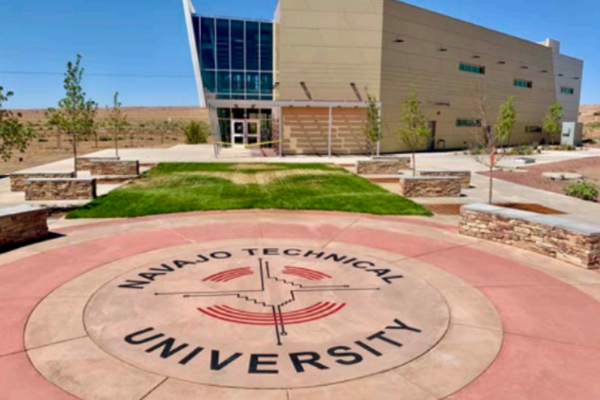
- Details
- By Native News Online Staff
The Tribal College and University (TCU) Building Bridges Grant Program has awarded more than $400,000 in its second funding cycle. Established through a partnership between the American Indian Higher Education Consortium (AIHEC) and NASA’s Minority University Research and Education Project (MUREP) for American Indian Alaska Native STEM Engagement (MAIANSE), the program aims to expand TCU student involvement in Science, Technology, Engineering, and Math (STEM) fields. The grants support initiatives that enhance course and curriculum development, foster research activities, and increase student engagement in STEM education.
“Our Tribal Colleges and Universities have put together some inspiring projects that will not only engage students but give them practical real-world experiences in STEM,” said Ahniwake Rose, AIHEC President & CEO, “We are grateful that the partnership with NASA made these opportunities possible and we are excited for the potential outcomes for the students, faculty, and the TCUs.”
In response to a request for proposals released in September 2024, AIHEC selected the following Tribal College & University projects centered around STEM enrichment:
Diné College: Redesigning First Year Writing for STEM Success: Data Sovereignty, Peer Mentorship, and Internship Support
This program partners with NASA and AIHEC’s Building Bridges initiative to support Diné College students in developing academic writing and research skills essential for STEM fields.
College of Menominee Nation: STEM Academy: Inspiring Tribal Youth through Drone Technology and Virtual Learning
This project introduces a ‘STEM Academy,’ which will support an initiative designed to inspire Indigenous youth through immersive experiences in drone technology, virtual reality, and career exploration within NASA-related STEM fields.
Nebraska Indian Community College: Empowering STEM Pathways: Engaging NICC Students in NASA-Focused Research through Experiential Learning
This program aims to develop real-world research skills and stimulate STEM career interests by providing hands-on experience in identifying extremophiles—organisms capable of thriving in harsh environments similar to Mars.
Navajo Technical University: Inspiring American Indian Students in STEM Education Through Robotics
This program aims to engage and empower Indigenous students in the Navajo Nation in STEM education through an integrated approach involving robotics-related projects, research, curriculum development, and partnerships with NASA for internship opportunities.
Red Lake Nation College: Establishing Weather Stations at Red Lake Nation College
This project will partner with consultants from the University Corporation for Atmospheric Research (UCAR) to establish and analyze data from weather stations on the Red Lake Reservation.
Salish Kootenai College: Identifying survival enzyme genes in Hanensula anomala at Salish Kootenai College
This program aims to identify the enzymes that are involved in H. anomala’s metal specific growth patterns.
Red Lake Nation College’s Director of Sponsored Programs and Research, Dr. Wendy Greenberg shared, “Our TCU Building Bridges grant to support research internships with the Red Lake DNR will dramatically increase the number of Red Lake Nation College students who have opportunities to engage in locally relevant STEM experiences and research.” Her project ‘Natural Resources Research Internships at Red Lake Nation College’ was awarded a grant in Round One funding.
“The MAIANSE Tribal College and Universities (TCU) Bridges Grant with the American Indian Higher Education Consortium (AIHEC) was created to build capacity at TCU’s. The second cycle of selections reaffirms our shared commitment to fostering innovation and expanding access within the STEM ecosystem,” stated Keya T. Briscoe, Minority University Research and Education Project (MUREP) Manager NASA Office of STEM Engagement.
NASA MAIANSE and AIHEC will implement another round of grants through the Tribal College and University (TCU) Building Bridges Grant Program in early 2025.
More Stories Like This
Native Students Can Win $5,000 Scholarship, International Distribution in Pendleton Design ContestAmerican Indian College Fund Raises Alarm Over Plan to Shift Native Programs Away From the Dept. of Education
MacKenzie Scott Foundation Gives $5 Million Contribution to Little Priest Tribal College
Tribal Leaders Push Back on Dismantling of U.S. Department of Education
American Indian College Fund Names 12 Student Ambassadors for 2025–26
Help us defend tribal sovereignty.
At Native News Online, our mission is rooted in telling the stories that strengthen sovereignty and uplift Indigenous voices — not just at year’s end, but every single day.
Because of your generosity last year, we were able to keep our reporters on the ground in tribal communities, at national gatherings and in the halls of Congress — covering the issues that matter most to Indian Country: sovereignty, culture, education, health and economic opportunity.
That support sustained us through a tough year in 2025. Now, as we look to the year ahead, we need your help right now to ensure warrior journalism remains strong — reporting that defends tribal sovereignty, amplifies Native truth, and holds power accountable.
 The stakes couldn't be higher. Your support keeps Native voices heard, Native stories told and Native sovereignty defended.
The stakes couldn't be higher. Your support keeps Native voices heard, Native stories told and Native sovereignty defended.
Stand with Warrior Journalism today.
Levi Rickert (Potawatomi), Editor & Publisher

